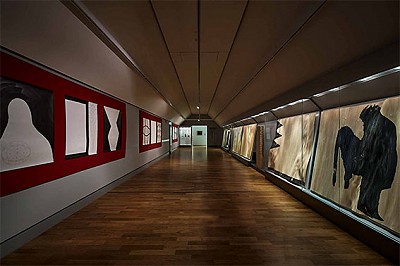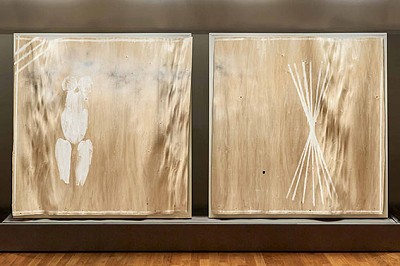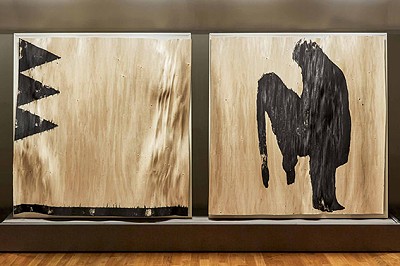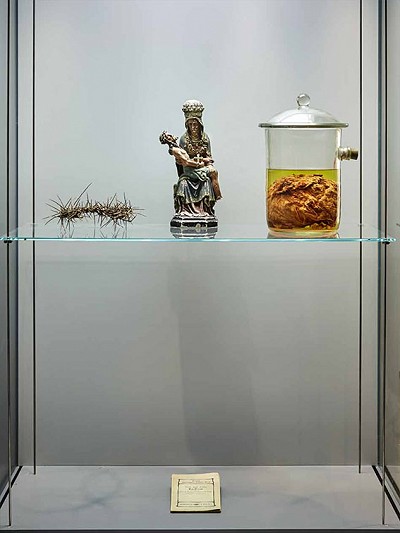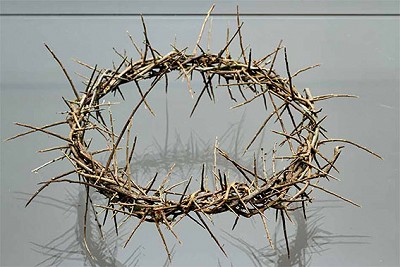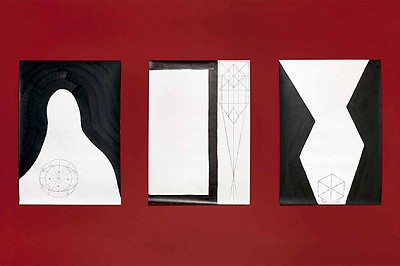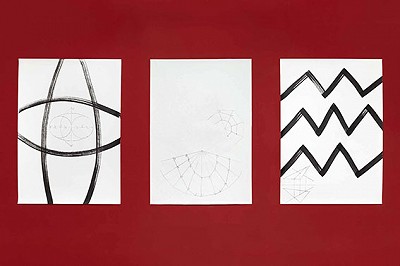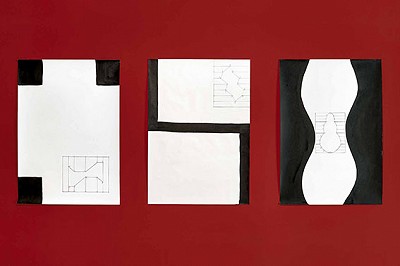Landesmuseum Mainz
Stabat Mater (ad libitum) 2016
Site-specific installation in the in the Graphic Arts Collection
Woodcut, graphite, garbage bag prints, body prints, oxblood on aspen wooden leaves with printing block and paraffin; drawings on paper, ink and graphite; sculptural sketches (Pietà – purchased at a flee market, plaster painted and glazed; crown of thorns – hawthorn branches; placenta – in a specimen jar preserved in an alcohol solution; book – G. E. Lessing Laokoon oder Über die Grenzen der Mahlerey und Poesie [English Title: Laocoön], study edition, 1905), audio installation
Explanation of the audio installation
The main source material for the audio loop in the installations Stabat Mater (ad libitum) is the setting of the Stabat Mater by the Mainz com poser Peter Cornelius (1824 – 1874). In addition to this composition, the installation draws on the music of four other composers: Giovanni Pergolesi (1710 – 1736), Antonin Dvořák (1841 – 1904), Francis Poulenc (1899 – 1963) and Arvo Pärt (b. 1935). The time structure of the work is based on the Fibonacci numbers (0, 1, 1, 2, 3, 5, 8, 13, 21, …). One special feature of this sequence is that the fifth term of the sequence—this assumes that the term 0 is indexed as 0—is itself five. The position of this term in the sequence combined with the number of composers provided the impetus to develop an organizational system based on the number five. The order, length and temporal position of the individual musical fragments, which are played backwards, are determined by sets of numbers composed of the first five Fibonacci numbers and four additional numbers in the sequence. Finally, when the entire process comes to an end it is followed by its inversion giving rise to an oscillation between long and short sound fragments.
